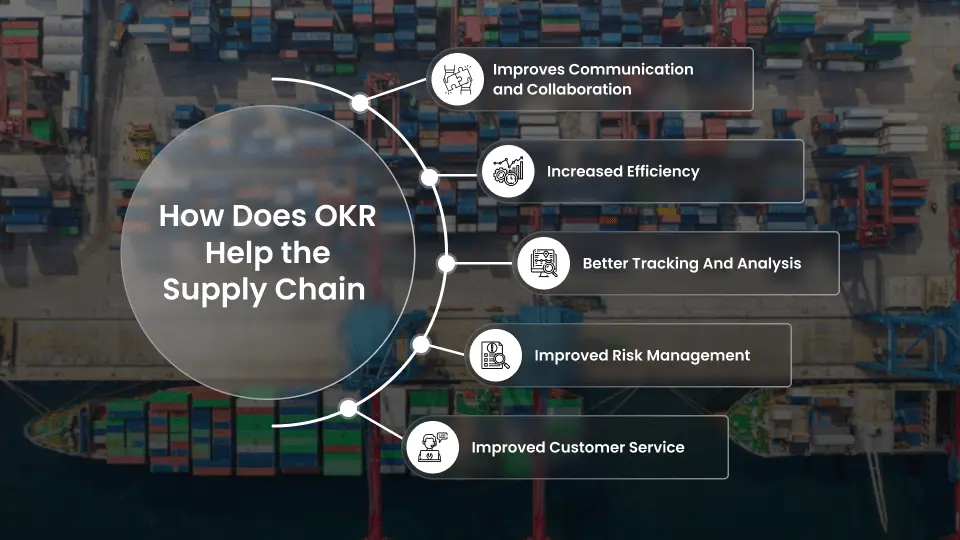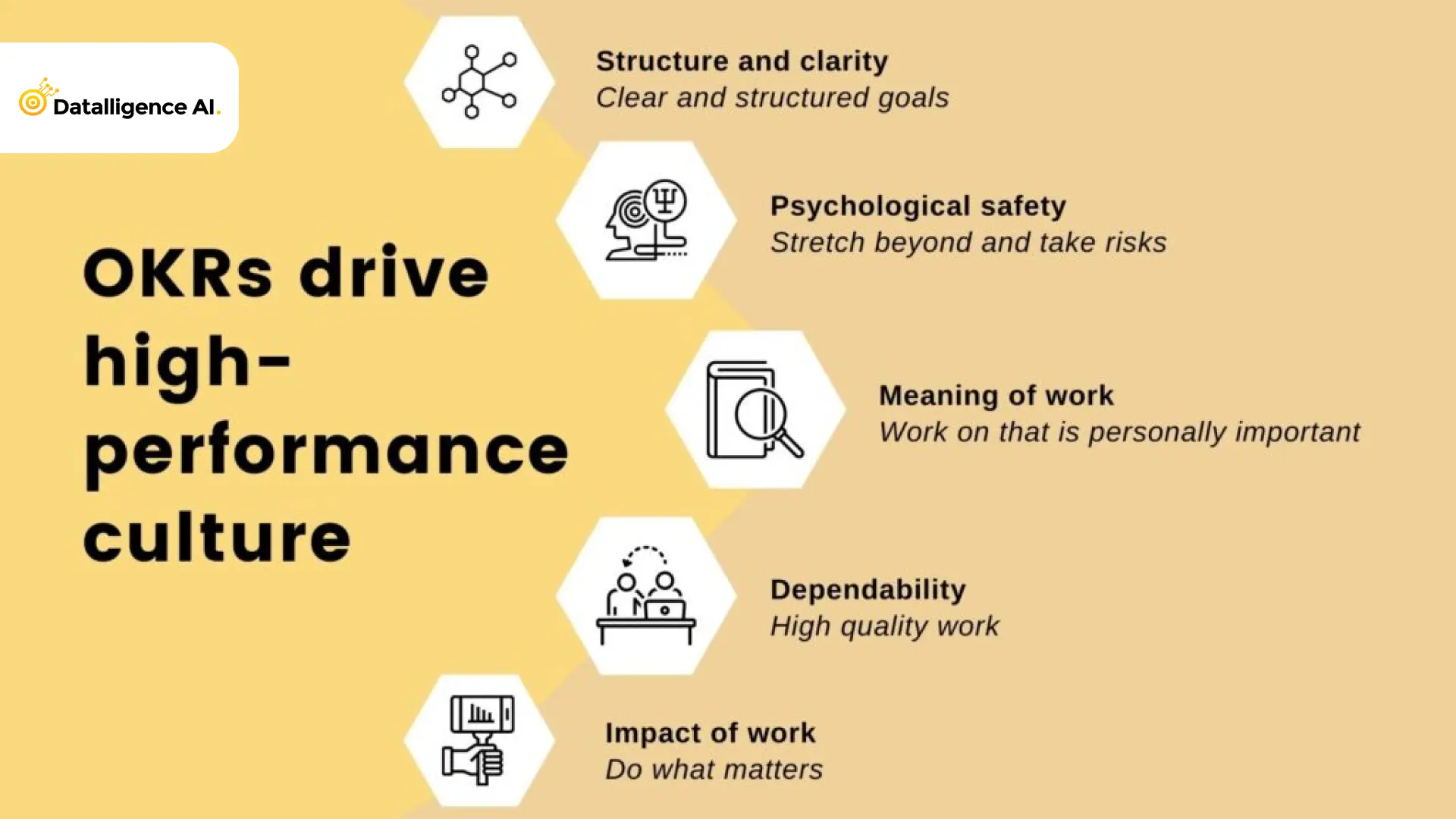10 Best Supply Chain OKR examples
Supply chain management has a rich history that dates back
Supply chain management has a rich history that dates back to the early 1900s when the focus was on improving manufacturing processes and reducing costs.
The first supply chain management concept was introduced by Ford Motor Company in 1913 when they implemented the assembly line to reduce production time and costs. The focus of supply chain management during this time was on the optimization of individual processes, rather than the entire supply chain.
In the 21st century, supply chain management has become more complex and global. Companies now have to manage their supply chains across multiple countries and regions, which has led to the development of new technologies and strategies to manage these complex supply chains. The focus is now on reducing risk, improving sustainability, and enhancing the customer experience.
The supply chain industry is growing at a massive rate, but How and Why do we need OKR to manage this?
In this blog, We shall go over How OKRs can help you.

OKR software can greatly benefit supply chain management by providing a comprehensive and structured approach to goal setting and tracking. Here are some specific ways that OKR software can help:
Improves Communication and Collaboration
OKR software helps to streamline communication and collaboration within the supply chain. With clear objectives, team members are better able to understand their roles and how their tasks fit into the larger supply chain goals. This leads to better collaboration, as individuals are more aware of their impact on the broader goals of the organization.
Increased Efficiency
OKR software helps to improve the efficiency of the supply chain by setting clear goals and objectives, which helps to ensure that everyone is working towards the same goal. By focusing on key objectives, organizations can improve their processes, reduce waste, and increase productivity.
Better Tracking and Analysis
OKR software can track progress towards objectives, which is particularly useful in the supply chain where there are often multiple moving parts. With real-time tracking, it is easier to identify areas of improvement, adjust goals as needed, and take corrective action where necessary.
Improved Risk Management
OKR software can help identify risks in the supply chain and develop strategies to mitigate them. This is particularly important in global supply chains, where there are often multiple partners involved. With clear objectives, it is easier to identify potential risks and take action to prevent disruptions in the supply chains.
Improved Customer Service
By focusing on the right objectives, organizations can improve customer service by ensuring that products are delivered on time, in the right quantity, and quality. This can be particularly important in industries where customer satisfaction is a key differentiator, such as retail or consumer goods.
We have seen how OKRs help the supply chain. Now let us see the best 10 Examples for the supply chain.
Objective 1: Improve On-Time Delivery
Objective 2: Increase Supplier Performance
Objective 3: Reduce Inventory Holding Costs
Objective 4: Improve Product Quality
Objective 5: Increase Supply Chain Visibility
Objective 6: Improve Transportation Efficiency
Objective 7: Increase Warehouse Efficiency
Objective 8: Improve Reverse Logistics
Objective 9: Implement Sustainable Practices
Objective 10: Enhance Supply Chain Risk Management
Implementing an OKR software solution in supply chain management can revolutionize the way companies set and achieve their goals.
With an OKR tool, companies can define their objectives and key results, track progress and align everyone in the organization toward a common goal. This can help in streamlining the supply chain process, increasing efficiency, and reducing costs. By setting measurable and achievable goals, the company can continuously improve its supply chain process and remain competitive in the market.
The OKR software can also provide real-time data and analytics, enabling companies to make informed decisions and optimize their supply chain operations. With a robust OKR software solution, companies can enhance their supply chain management practices and achieve significant business growth.
To learn more about the Supply chain OKRs, speak with our OKR experts. Our subject matter specialists will assist you in identifying the important KPIs and in developing OKRs that will boost revenue growth and profitability. Industry-neutral OKRs are particularly intriguing when they are used in sectors like Supply chains or Try “Datalligence” for free.
Dharma AR2024-07-24T14:01:24+00:00February 15, 2023|Objectives and Key Results|
Supply chain management has a rich history that dates back
Dharma AR2023-08-26T11:52:29+00:00February 13, 2023|Objectives and Key Results|
Workshops are conducted mainly and solely for employees to share
Dharma AR2023-08-26T12:52:02+00:00January 30, 2023|Objectives and Key Results|
A vision is a goal for what your business will
Dharma AR2023-08-26T11:26:55+00:00December 28, 2022|Objectives and Key Results|
Growing a business can be a challenging task, especially in
Dharma AR2024-07-09T04:41:30+00:00December 15, 2022|Objectives and Key Results|
OKR has become one
Dharma AR2023-09-08T13:28:29+00:00November 19, 2022|Employee Engagement|
9-5 work at the office is not something relevant to
Dharma AR2024-07-26T06:46:57+00:00August 21, 2021|Objectives and Key Results|
94% of entrepreneurs and 88% of job seekers say
A lot rides on the organizational culture, and this is why. Organizational culture is the sum of the standard practices with which an organization functions with. Also known as the corporate culture, it includes the way of thinking, experiences, the belief system as well as all future expectations. They are externalized through the training given, office environment, team interactions, meetings, and how authority presents themselves. These values and etiquette are then subconsciously internalized by the employees just by being a part of the organization. In an organization, culture is not just a part of the system; it is the entire system which includes performance, principles, communication, and teamwork etc.
It is thus not far-fetched to say that the culture is like the operating system for an organization. In other words, organizational culture is the collective behaviour of its employees, and the organization becomes the collective capacity of those employees. Creating value is the primary function of any organization. So, the more the value, the better the achievement rate for that goal. The path to creating more value is via enhancing the performance of the organization. The culture that enables superior performance/results is called a high-performance culture.
There are a few questions that would come to mind in this aspect.
This article answers all the above questions while also getting little in-depth on high-performance culture and its attainment by means of the goal-setting framework like OKR. Its body of content aims to give leaders insight into critical business practice and solutions to crucial pain points for business success.
A company’s success does not depend on the result alone. Like we discussed earlier, it includes performance, principles, communication, and teamwork. Employee experience in the organization is another critical ingredient. The career growth and long-term success of the employee and organization are considered when talking about high-performance companies.
A high-performance culture ensures productive, motivated, and engaged employees. It helps avoid stagnation and move towards growth and competitiveness. Therefore, high-performance companies are those that achieve financial and non-financial goals for a long time over their peers and competitors. While leadership and discipline are among the most important factors that enforce the performance culture, organizations should be aware that they are not the only factors. When the employees do not get a chance to participate in certain goal-setting activities, they tend to feel suffocated by the rules set for them.
On the other hand, a well-articulated strategy combined with discussions provides the opposite effect of hierarchy and rules. They give closure to the employees and make them accountable on multiple levels. When discipline is encouraged positively, there is no need for bureaucracy; and when the leadership is communicative, there is no need for excessive force.

Giving closure to the employees on the organization’s goals and objectives and thereby improving their performance is the OKR methodology. Objective and Key Results (OKR) goal-setting framework, which demands clearly defined objectives and expected results, is mainstream from the inception of Intel to late 90s Google.
Advantages of performance management OKR
OKR warrants the alignment of employee goals with the objective of your business. In most organizations, more often than not, the CEO sets the goals for everyone. In such a scenario, the employees are unaware of how they fit into the bigger picture. The singular alignment will make way to a particular direction of focus for all of the employees. Aligning the personal goals of the employees with the vision and mission of the company is vital. From planning OKRs to their eventual execution, all parties, from managers to the low-tier workers, tie their day-to-day activities to the company goals. Thus, your business will be focused on what matters with the help of OKR, thereby improving performance. Companies with highly aligned employees are contenders to be the top performers, says Harvard Business Review.
Sustainable organizational performance is the harmonization of the company’s as well as employee objectives while delivering core business values. The efforts put in by the employees should not deteriorate in time. Sustainability is a highly challenging task in today’s shifting paradigm. It could get affected by various factors such as the market crash, changing consumer behaviour, or a worldwide pandemic. They can instantly affect your business and may demand a goal reset. If sustaining performance is this hard, think about what is required to excel your performance from your competition. Your entire workforce needs to be agile. The employee should be able to adapt to any situation. With OKR, you can set daily and weekly goals for your employees instead of them chasing the long-term goal dictated by the manager. Therefore, even in the changing environment, employees have step-by-step clarity, leading to sustained performance within every level of your organization.
OKR is a quantifiable management methodology. Unlike other methodologies, you can measure the success of your objectives with the benefits that come from them. These benefits are called Key Results or KRs. With KRs, your employees can really know what success might look like. Any given objective can have a maximum of three KRs (preferably). This again gives clarity in what is expected to be achieved for your employees, and clarity always leads to an increase in performance.
Transparency is one of the key abilities to have an aligned goal-setting framework. With OKR, progress made by every employee is updated constantly. These goals can be viewed by anyone in the organization, depending on how the privacy settings are placed. Because of this, everyone in the team holds themselves accountable. In case the task is not aligned with company goals, regular checks can ensure course correction early on, thus saving time and effort. Thus, the focus is always towards what matters the most to the entire organization. Every little task matters. OKR, through its transparency, promotes accountability and teamwork, which are factors that enhance the performance of your organization.
OKRs drives a high-performance culture in its strategy and execution. All the deciding advantages of a successful business from OKRs such as regular check-ins, assessment, and course correction positively impact the organization’s performance. The OKR and performance management of an organization allows for a holistic cultural shift. If you wish to implement OKR in your organization to drive a high-performance culture, dedicated OKR software is the best and easiest option. You need software that helps provide contextual feedback, brings a 360-degree view of the goals, and ensures that everyone participates.
Try the Datalligence OKR management software trial and get to first-hand how the program benefits the high-performance culture.